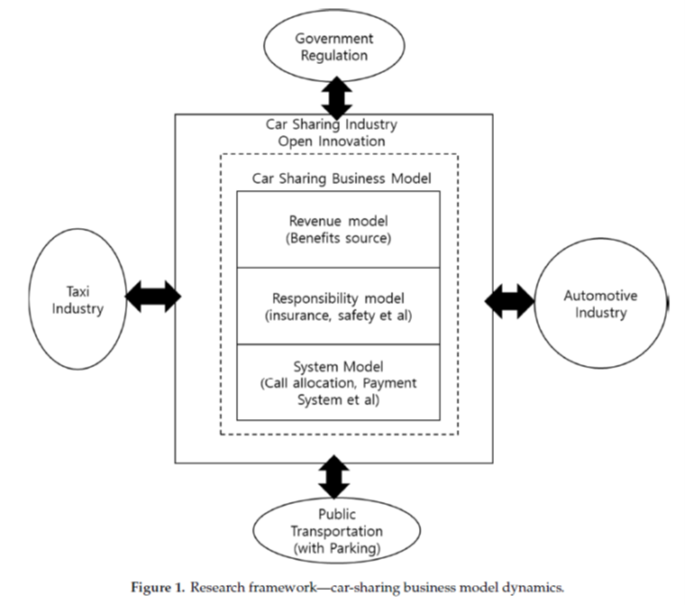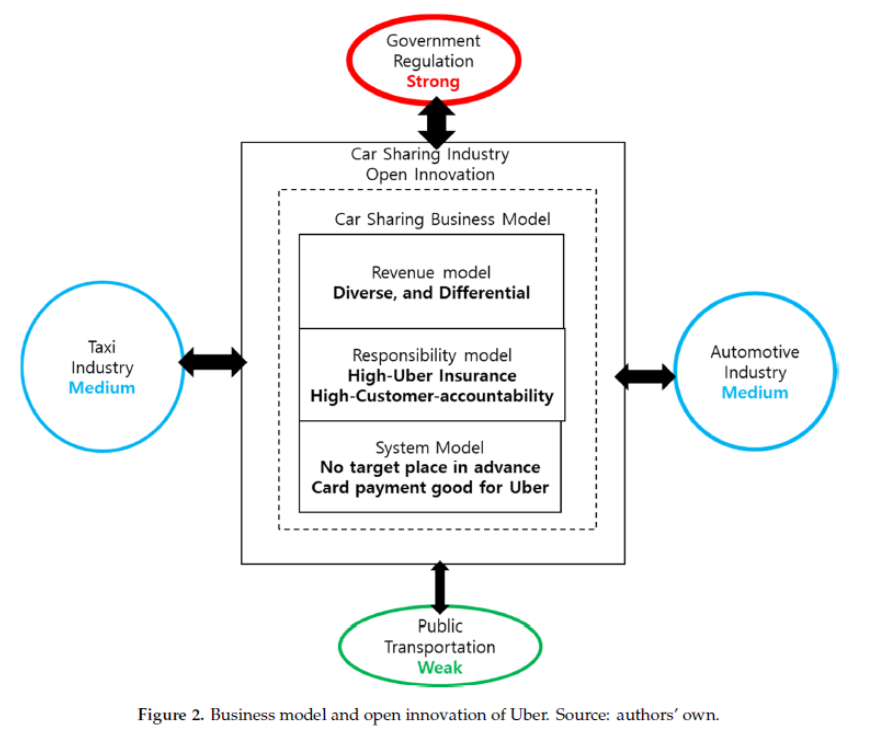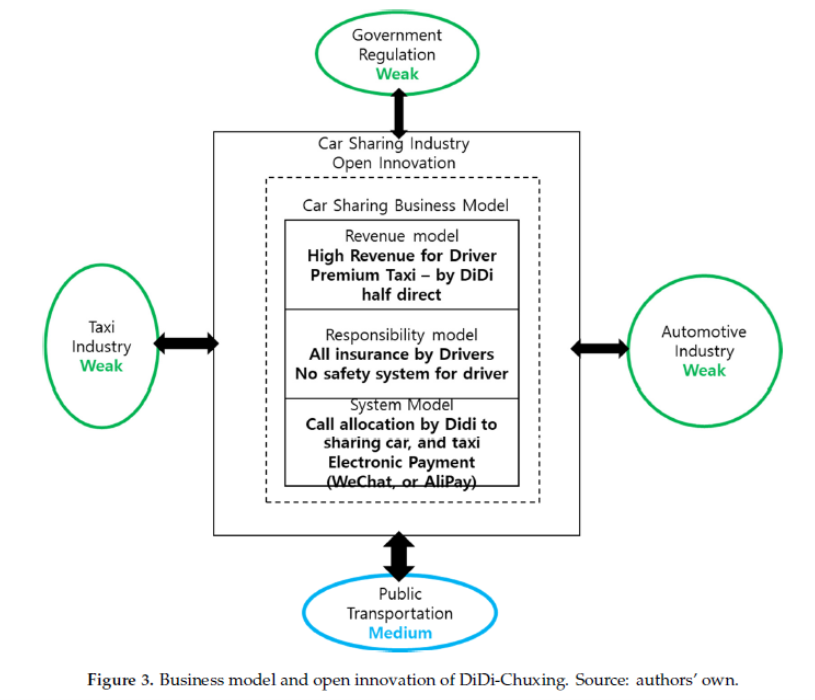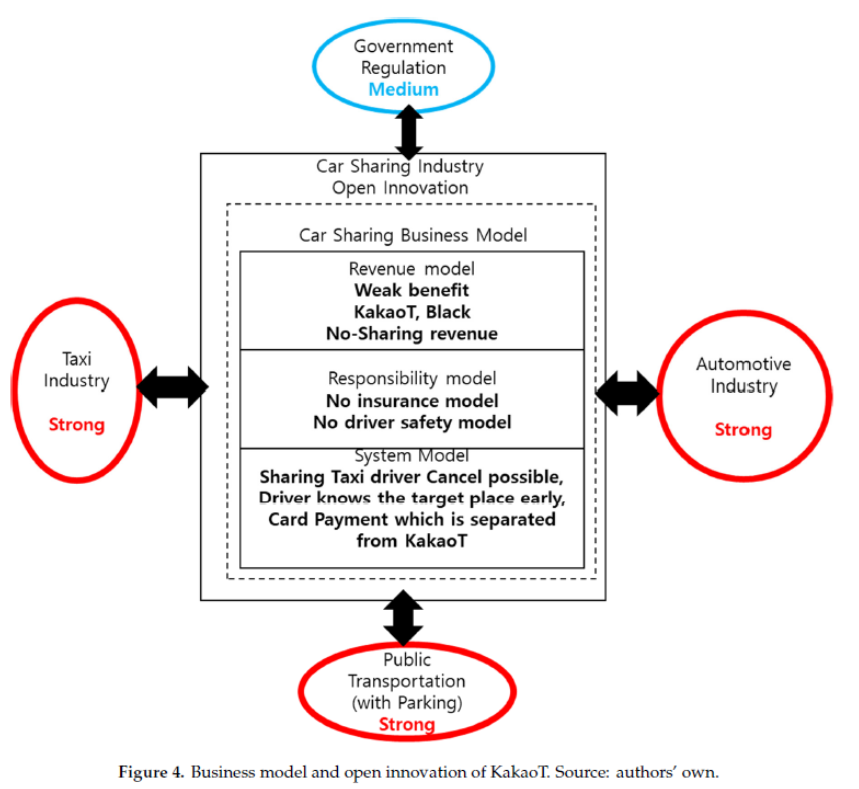
Researchers JinHyo Joseph Yun, WooYoung Jung and Xiaofei Zhao (from the Department of Open Innovation and Business ,Model, Open Innovation Academy of SOItmC, and DGIST, Daegu, Korea), Jinxi Wu, (Tsinghua University, China), John C. Yi (Haub School of Business, Saint Joseph’s University, Philadelphia, USA), and KyungBae Park (Department of Business Administration, Sangji University, Wonju, Korea), published an article in MPDI in March 2020 named “Business Model, Open Innovation, and Sustainability in Car Sharing Industry—Comparing Three Economies. The article provides an up- to-date review on this issue. Here are some of the key issues.
This paper discusses dynamics and differences of business models in the car-sharing industry and focuses on open innovation as the trigger of diverse business models among Uber in the U.S., DiDi Chuxing in China, and KakaoT in Korea.
The main research question is as follows: What causes the differences in business models in the
car-sharing industry? Researchers additionally posed two detailed research questions: Does the difference in open innovation motivate the diversity of business models among Uber, DiDi Chuxing, and KakaoT? If so, what were the differences in open innovation and business models among Uber, Didi Chuxing, and KakaoT?
The authors selected four factors that affect the car-sharing industry open innovation, such as taxi industry, public transportation with parking, automotive industry, and government regulation.

- Public Transportation: Ridesharing may have overall negative consequences for a city in several aspects such as promoting the shift from public transport to shared cars or an increase in vehicle kilometers travelled.
- Government Regulation: The sharing economy has attracted a great deal of attention recently, and platforms such as Airbnb and Uber are experiencing explosive growth, which in turn has led to regulatory and political battles. Government regulation structures often discourage sharing economy innovations, reducing their popularity and slowing their development. However, weak government regulations can increase revenue and lead to a system model without responsibility.
- Taxi Industry: If the taxi industry is strong, the revenue model is weak according to KakaoT. However, if taxi is weak, like DiDi Chuxing, the model shows high revenue. So to say, if there exists strong industry, it is difficult for the sharing industry to make enough revenue without changing government regulations to protect existing industry.
- Automotive Industry: a strong automotive industry can decrease the revenue model indirectly with a direct or indirect increase of responsibility, and system BM (business model), like KaKao-T. However, a weak automotive industry can motivate revenue and system BM directly and indirectly, with control of BM, as with DiDi-Chuxing.
The researchers highlight that in the car sharing industry, establishment and availability of a competing non-sharing service such as the taxi industry, the automotive industry or the public transportation, can be very important influencing factors for the success possibility of a car-service sharing.
Comparison of Three Firms
The study points out that there are three basic components in the business model in the sharing industry: system, revenue, and responsibility. A mutual reinforcing loop exists between these three basic components of system, revenue, and responsibility.
a) Business Model – UBER

b) Business Model of DiDi

c) Business model KakaoT

The study indicates that the difference in open innovation of car-sharing firms will lead to dynamic diversity of car-sharing business models, including revenue models, such as benefit source; responsibility models, such as insurance, safety; and system models, such as call allocation, payment system, etc.
Finding and Contribution of this Study
First, business models of the car-sharing firms Uber, DiDi-Chuxing, and KakaoT are not fixed but rather are dynamically changing.
Second, the business model of car-sharing firms such as Uber, DiDi-Chuxing, and KakaoT is dynamic in so far that business models of car-sharing firms are always changing in the interaction with four agencies, such as the taxi industry, government regulations, public transportation, and automotive industry as new learning mode of the fourth industrial revolution.
The dynamics and differentiation of business models of the car-sharing firm depends greatly on the open innovation level and strategy of the firm, which are dependent of the power of the four agencies, and interactions with them. The powerful open innovation of car-sharing firms will produce creative business models in revenue, responsibility, and system BM.
The most important finding of this research is the dynamic characteristics of the business model of the car-sharing industry, which has an intensive relationship with the degree of open innovation of the car-sharing firm and the power of four agencies and the interactions among them.
Third, open innovation strategies of car-sharing firms determine the contents and dynamics of car-sharing business models, such as the revenue business model, responsibility business model, and system business model upon interaction with four agencies.